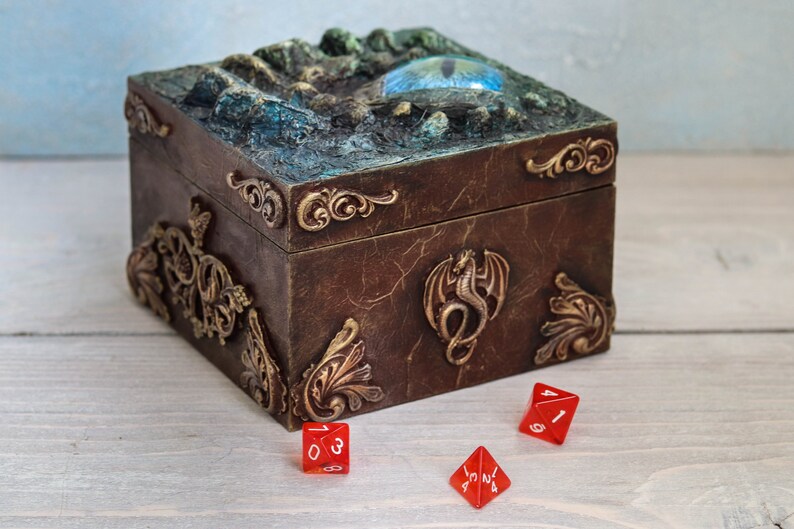

The Hero tier allows you to make as many character sheets as you want and also opens up access to test new D&D Beyond tools. You can also buy a subscription at either the Hero tier ($3 per month) or the Master tier ($6 per month) to unlock extra features. Both types of books are typically $30 apiece, though some smaller packages cost less. It also offers adventure books, like Curse of Strahd and Candlekeep Mysteries, which DMs can use to run campaigns. D&D Beyond offers sourcebooks, like Tasha's Cauldron of Everything and Explorer's Guide to Wildemount, which give you new settings and character options. If you want to invest in your D&D games, you can buy digital versions of official D&D books in a few different flavors.
Dnd dicebox designs free#
Free accounts only have access to the basic rules (including races and classes), and are limited to six characters, but that should be plenty for most new players. For people who are new to the game, there's no easier way to get started.ĭ&D Beyond's online character creator is free, allowing you to try different character builds without having to spend a dime. It's a straightforward tool that makes creating characters fun by simplifying most of the process. Extremely easy to pick up and get startedĭ&D Beyond was already a popular service long before it was bought by Hasbro, which also owns D&D publisher Wizards of the Coast.It just could have been so much better with just a modicum of care. The Elderwood products you carry prove that.Īgain, I'm not complaining.

You can mass produce *and* have the highest of quality. I would have much rather spent $5 more, and had these things been done correctly.

It appears that none of this was done in this case, of it it was, it was done poorly. We change the bits on our CNC / routers frequently to sharpen them to limit tear-out and the amount of sanding needed. We see the value in taking 2-3m of sanding when the CNC / router is done. We understand that care must be taken when working with epoxy.
Dnd dicebox designs how to#
However, as woodworkers we have the knowledge to how to work with the crown so as to mitigate the impact of the natural tendencies of wood over time. But as a woodworker, it's a shame to see such fine hardwood used incorrectly like this. If it had been facing the other direction, the bow would be concave on the bottom, with the small gap showing on the short ends, instead of the long sides.Īgain, this is being nit-picky for sure. Due to the opposing crowns, the top is curved upward slightly, so it "rocks" in place. By having them face away, you virtually guarantee a gap over time along the long edges. This is the *exact* *opposite* of how you should build something like this! The crowns should be facing each other, ideally, or at most, in the same direction. The top piece was routed with the crown facing up, yet the bottom is crown facing down. Somehow a few drops of epoxy made it onto the perimeter of the flange, which now can't be removed without sanding which will also affect the varnish finish. The overspill wasn't properly wiped, leaving a white ring around the magnets sitting on the finished surface. Too much epoxy is applied into the holes before the magnets are inserted, resulting in overspill. If you look at Elderwood stuff, it is baby smooth. There is minor tearing out in a few spots along the flange. This is fine with your bits are extra sharp, but they aren't always. After the wood CNC / router, there is no extra sanding of the routed surfaces (the dice holes or the recessed lid flange or lip). But, there is significant room for improvement.

Now, for the money, I wasn't expecting Elderwood Academy quality, and neither should you. But, as a wood-worker who strives for perfection, there are glaring issues. Overall, I'm satisfied given what I paid it works as advertised.


 0 kommentar(er)
0 kommentar(er)
